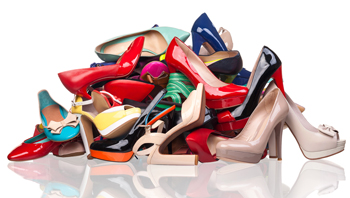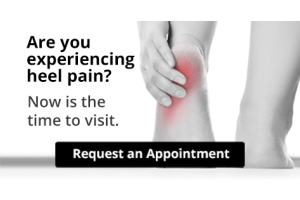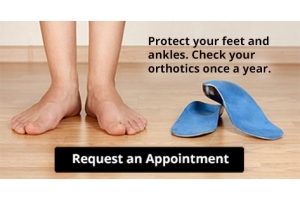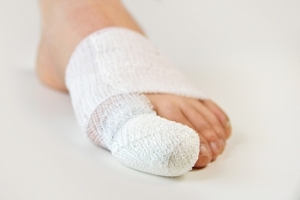Super User
January 2024 Newsletter!
Subject: Step into the New Year with Healthy Feet!
As we bid farewell to 2023, we express our gratitude for entrusting us with your foot and ankle health. This year holds the promise of new beginnings, and what better way to start afresh than by taking proactive steps towards optimal foot care!
1. Prioritize Your Foot Health: The foundation of overall well-being often begins with healthy feet. Consider scheduling a routine check-up to ensure your feet are in top shape for the adventures that lie ahead.
2. Diabetic Foot Care: For our diabetic patients, maintaining foot health is of paramount importance. Did you know that many payers cover diabetic shoes when qualifying conditions are present? These specialized shoes are designed to provide the support and protection needed to prevent complications associated with diabetes. Schedule an appointment with us to discuss your eligibility and find the perfect fit for your lifestyle.
3. New Year, New Shoes: Investing in proper footwear can make a significant difference in your daily comfort and mobility. Whether you're an athlete, a fashion enthusiast, or simply seeking comfortable options for everyday wear, our podiatry experts are here to guide you toward the right choices.
4. Tips for Healthy Feet in 2024:
- Maintain good hygiene by washing and thoroughly drying your feet daily.
- Trim your toenails regularly, cutting straight across to prevent ingrown nails.
- Stay active with exercises that promote foot strength and flexibility.
- Choose supportive and comfortable shoes for different activities.
5. Schedule Your Appointment:
To kickstart the New Year on the right foot, literally, book your appointment today. Our team is dedicated to providing personalized care to ensure you step into the future with confidence. Wishing you a joyful, healthy, and happy New Year!
Can Foot Conditions Be Caused From Wearing High Heels?
 Research has indicated that when high heels are worn frequently, damage may be done to the feet. The calf muscles may become shorter, which may cause Achilles tendon injuries. Additionally, uncomfortable foot conditions may develop as a result of inadequate room in the front of the shoe for yur toes. These can include bunions, hammertoes, corns, and blisters. Many women balance the desire to wear high heels by alternating with shoes that have a lower heel. Additionally, falling may be prevented when specific foot and ankle stretches are practiced, which can help the overall foot to become stronger. If you would like more information about how the feet are impacted by high heels, it is suggested that you consult with a podiatrist.
Research has indicated that when high heels are worn frequently, damage may be done to the feet. The calf muscles may become shorter, which may cause Achilles tendon injuries. Additionally, uncomfortable foot conditions may develop as a result of inadequate room in the front of the shoe for yur toes. These can include bunions, hammertoes, corns, and blisters. Many women balance the desire to wear high heels by alternating with shoes that have a lower heel. Additionally, falling may be prevented when specific foot and ankle stretches are practiced, which can help the overall foot to become stronger. If you would like more information about how the feet are impacted by high heels, it is suggested that you consult with a podiatrist.
High heels have a history of causing foot and ankle problems. If you have any concerns about your feet or ankles, contact one of our podiatrists from Carolina Foot & Ankle. Our doctors can provide the care you need to keep you pain-free and on your feet.
Effects of High Heels on the Feet
High heels are popular shoes among women because of their many styles and societal appeal. Despite this, high heels can still cause many health problems if worn too frequently.
Which Parts of My Body Will Be Affected by High Heels?
- Ankle Joints
- Achilles Tendon – May shorten and stiffen with prolonged wear
- Balls of the Feet
- Knees – Heels cause the knees to bend constantly, creating stress on them
- Back – They decrease the spine’s ability to absorb shock, which may lead to back pain. The vertebrae of the lower back may compress.
What Kinds of Foot Problems Can Develop from Wearing High Heels?
- Corns
- Calluses
- Hammertoe
- Bunions
- Morton’s Neuroma
- Plantar Fasciitis
How Can I Still Wear High Heels and Maintain Foot Health?
If you want to wear high heeled shoes, make sure that you are not wearing them every day, as this will help prevent long term physical problems. Try wearing thicker heels as opposed to stilettos to distribute weight more evenly across the feet. Always make sure you are wearing the proper shoes for the right occasion, such as sneakers for exercising. If you walk to work, try carrying your heels with you and changing into them once you arrive at work. Adding inserts to your heels can help cushion your feet and absorb shock. Full foot inserts or metatarsal pads are available.
If you have any questions please feel free to contact one of our offices located in Huntersville Office | 16419 Northcross Dr Suite A, Huntersville, NC 28078; Mooresvillle Office | 206 Joe Knox Avenue Suite D, Mooresville, NC 28117; and Mountain Island | 10310 Couloak Drive Suite 200, Charlotte, NC 28216 . We offer the newest diagnostic and treatment technologies for all your foot and ankle needs.
Effect of High Heels on the Feet
For hundreds of years, women have been wearing various kinds of high heels for aesthetic reasons. Women who wear high heels appear to be taller and have longer and thinner legs, and the wearer’s gait and posture changes. Though high heels have had an association with femininity and have kept them popular over the years, there are definite health problems caused by wearing them too frequently.
The motion of the ankle joints is limited when heels are worn. The ankle joint is very important to the body when it comes to walking. Because of their location, these joints have a great deal of weight put on them. Thus, it is very important to keep them as healthy as possible. The Achilles tendon is the main tendon in the ankle. Wearing high heels too often, studies have shown, can cause the calf muscle and Achilles tendon to shorten and stiffen. This can cause problems when shoes without heels are worn.
By putting a great deal of pressure on the ball of the foot and by forcing the toes into a small toe box, high heels can cause or may worsen many foot problems. These include corns, hammertoe, bunions, Morton’s neuroma and plantar fasciitis.
Not only does wearing high heels regularly have negative effects on the feet, the rest of the body can suffer as well. The knees, one of the most important joints in the entire body, can be affected by wearing high heels. High heels can cause the knees to stay bent all the time. Also, it can cause them to bend slightly inward as well. Doctors believe that women can suffer from osteoarthritis later in life because of constantly walking like in high heels. By limiting the natural motion of the foot during walking, high heels also cause an increased in stress on the knees.
Similarly, high heels can cause the back to go out of alignment. If high heels are worn constantly, the spine’s ability to absorb shock can cause continued back pain. They can compress the vertebrae of the lower back, and can overuse the back muscles.
However, this is not to say that high heels can never be worn. If worn occasionally and not often, they will not cause serious problems. They should not be worn every day. It’s important to wear them modestly to avoid the long-term physical health problems of the feet, knees, ankles, and back mentioned above.
Does My Broken Toe Require Surgery?
 The noticeable symptoms of a broken toe often include bruising, swelling, and redness. In severe cases, the affected toe may appear deformed, and surgery may be required for complete healing.This type of injury generally happens as a result of stubbing the toe into a piece of furniture, or from a heavy object dropping on it. It can be beneficial to elevate the foot as often as possible, and this may help to reduce existing swelling. A common treatment method is known as buddy taping. This is implemented by taping the broken toe to the toe next to it, and this may be helpful in providing the necessary support as the healing process takes place. A broken toe requires a proper diagnosis and prompt treatment. If you have endured this type of injury, please consult with a podiatrist who can effectively treat broken toes.
The noticeable symptoms of a broken toe often include bruising, swelling, and redness. In severe cases, the affected toe may appear deformed, and surgery may be required for complete healing.This type of injury generally happens as a result of stubbing the toe into a piece of furniture, or from a heavy object dropping on it. It can be beneficial to elevate the foot as often as possible, and this may help to reduce existing swelling. A common treatment method is known as buddy taping. This is implemented by taping the broken toe to the toe next to it, and this may be helpful in providing the necessary support as the healing process takes place. A broken toe requires a proper diagnosis and prompt treatment. If you have endured this type of injury, please consult with a podiatrist who can effectively treat broken toes.
Broken toes may cause a lot of pain and should be treated as soon as possible. If you have any concerns about your feet, contact one of our podiatrists from Carolina Foot & Ankle. Our doctors will treat your foot and ankle needs.
What Is a Broken Toe?
A broken toe occurs when one or more of the toe bones of the foot are broken after an injury. Injuries such as stubbing your toe or dropping a heavy object on it may cause a toe fracture.
Symptoms of a Broken Toe
- Swelling
- Pain (with/without wearing shoes)
- Stiffness
- Nail Injury
Although the injured toe should be monitored daily, it is especially important to have a podiatrist look at your toe if you have severe symptoms. Some of these symptoms include worsening or new pain that is not relieved with medication, sores, redness, or open wounds near the toe.
If you have any questions, please feel free to contact one of our offices located in Huntersville Office | 16419 Northcross Dr Suite A, Huntersville, NC 28078; Mooresvillle Office | 206 Joe Knox Avenue Suite D, Mooresville, NC 28117; and Mountain Island | 10310 Couloak Drive Suite 200, Charlotte, NC 28216 . We offer the newest diagnostic and treatment technologies for all your foot care needs.
What to Know About a Broken Toe
The forefoot is composed of five metatarsal bones and fourteen phalanges. Each toe has three phalanges except for the big toe which only has two. Our toes play an essential role to the walking process, which is why a broken toe could seriously disrupt one’s ability to move around. Toe fractures are common and can be very painful. Fortunately, these injuries rarely require surgery and usually heal with rest and a change in activity.
Broken toes typically result from a traumatic event such as falling, stubbing the toe, or dropping something on the toe. Traumatic toe fractures may be categorized as either minor or severe fractures. At times, one may hear a “pop” or “crack” sound when the bone breaks. Common symptoms of a traumatic toe fracture include pain, throbbing, bruising, swelling, and redness.
Another type of toe fractures is a stress fracture. These injuries usually appear in the form of small hairline breaks on the bone. Stress fractures develop after repetitive activity instead of a single injury. Stress fractures occur when the muscles in the bone become too weak to absorb impact. Consequently, the toe bone becomes vulnerable to any pressure and impact it endures. Symptoms for a stress fracture in the toe include swelling without bruising, tenderness to the touch, pain that goes away with rest, and pain after walking or running.
If you suspect that you have a broken toe, you should make an appointment with your podiatrist. He or she will likely diagnose you by performing a physical exam and an X-ray. Treatment for a broken toe may include the R.I.C.E. method, buddy taping, surgery, or antibiotics. The R.I.C.E. method (Rest, Ice, Compression, and Elevation) is a common treatment method for many injuries because it decreases pain. Buddy tapping involves wrapping the injured toe next to an adjacent toe to keep it supported and protected. These two methods have proven to be effective in the healing process for toe fractures. The estimated healing time for a broken toe is approximately four to six weeks. If the injury becomes infected or requires surgery, the estimated healing time may take eight weeks or more.
Foot Conditions Which May Affect Children
 The majority of children are born with flat feet. The arch generally develops normally as the child grows, and it is important to have shoes and socks that fit properly as the feet get larger. Children may experience specific foot conditions as the aging process occurs, and it is beneficial for parents to be aware of how their child walks. Some of these ailments can include limping, permanent flat feet, walking on tip-toes, or walking may begin later than average. It is beneficial to measure your child’s feet approximately every three months, and this can help to determine what the proper size shoe is. If you would like additional information about specific foot conditions that can affect children, it is suggested that you speak with a podiatrist who can answer any concerns you may have.
The majority of children are born with flat feet. The arch generally develops normally as the child grows, and it is important to have shoes and socks that fit properly as the feet get larger. Children may experience specific foot conditions as the aging process occurs, and it is beneficial for parents to be aware of how their child walks. Some of these ailments can include limping, permanent flat feet, walking on tip-toes, or walking may begin later than average. It is beneficial to measure your child’s feet approximately every three months, and this can help to determine what the proper size shoe is. If you would like additional information about specific foot conditions that can affect children, it is suggested that you speak with a podiatrist who can answer any concerns you may have.
Making sure that your children maintain good foot health is very important as they grow. If you have any questions, contact one of our podiatrists of Carolina Foot & Ankle. Our doctors can provide the care you need to keep you pain-free and on your feet.
Keeping Children's Feet Healthy
Having healthy feet during childhood can help prevent medical problems later in life, namely in the back and legs. As children grow, their feet require different types of care. Here are some things to consider...
Although babies do not walk yet, it is still very important to take care of their feet.
Avoid putting tight shoes or socks on his or her feet.
Allow the baby to stretch and kick his or her feet to feel comfortable.
As a toddler, kids are now on the move and begin to develop differently. At this age, toddlers are getting a feel for walking, so don’t be alarmed if your toddler is unsteady or ‘walks funny’.
As your child gets older, it is important to teach them how to take care of their feet.
Show them proper hygiene to prevent infections such as fungus.
Be watchful for any pain or injury.
Have all injuries checked by a doctor as soon as possible.
Comfortable, protective shoes should always be worn, especially at play.
If you have any questions please feel free to contact one of our offices located in Huntersville Office | 16419 Northcross Dr Suite A, Huntersville, NC 28078; Mooresvillle Office | 206 Joe Knox Avenue Suite D, Mooresville, NC 28117; and Mountain Island | 10310 Couloak Drive Suite 200, Charlotte, NC 28216 . We offer the newest diagnostic and treatment technologies for all your foot and ankle needs.











